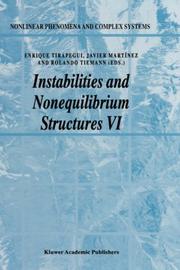| Listing 1 - 10 of 12 | << page >> |
Sort by
|
Book
ISBN: 9781472591043 9781472591036 9781472591050 9781472591067 1472591038 1472591046 1472591062 1472591054 9781474287302 1474287301 Year: 2016 Publisher: London, [England] : Bloomsbury Academic,
Abstract | Keywords | Export | Availability | Bookmark
 Loading...
Loading...Choose an application
- Reference Manager
- EndNote
- RefWorks (Direct export to RefWorks)
"This important study introduces the key theories of national identity, and relates them to the broad fields of product, graphic and fashion design.Javier Gimeno-Martinez approaches the inter-relationship between national identity and cultural production from two perspectives: the distinctive characteristics of a nation's output, and the consumption of design products within a country as a means of generating a national design landscape. Using case studies ranging from stamps in nineteenth century Russian-occupied Finland, to Coca-Cola as an 'American' drink in modern Trinidad and Tobago, he addresses concepts of essentialism, constructivism, geography and multiculturality, and considers the works of key theorists, including Benedict Anderson, Eric Hobsbawm and Doreen Massey.This illuminating book offers the first comprehensive account of how national identity and cultural policy have shaped design, while suggesting that traditional formations of the 'national' are increasingly unsustainable in an age of globalisation, migration and cultural diversity.Javier Gimeno-Martinez is Lecturer in Design Cultures at the VU University Amsterdam, The Netherlands." -- Publisher's description.
History of civilization --- Philosophy and psychology of culture --- design [discipline] --- Design --- Nationalism. --- Nationalism and art. --- Nationalisme --- Political aspects. --- Aspect politique --- Nationalism and art --- Nationalisme et art --- Ethnic relations --- Consciousness, National --- Identity, National --- National consciousness --- National identity --- International relations --- Patriotism --- Political science --- Autonomy and independence movements --- Internationalism --- Political messianism --- Economic aspects. --- nationale identiteit
Book
ISBN: 8478827382 9788478827381 Year: 2012 Publisher: Madrid Ediciones clásicas
Abstract | Keywords | Export | Availability | Bookmark
 Loading...
Loading...Choose an application
- Reference Manager
- EndNote
- RefWorks (Direct export to RefWorks)
Book
ISBN: 9780367706289 9780367706296 Year: 2025 Publisher: Abingdon, Oxon Routledge/Taylor & Francis Group
Abstract | Keywords | Export | Availability | Bookmark
 Loading...
Loading...Choose an application
- Reference Manager
- EndNote
- RefWorks (Direct export to RefWorks)
"This student friendly text provides a comprehensive exploration of the methods and approaches employed within design scholarship, drawing upon influences from history, art history, anthropology and interdisciplinary studies such as science and technology studies and material culture studies. Drawing connections between these methods and the evolving landscape of design, the book expands design culture beyond traditional outcomes to encompass areas like design for social innovation, digital design, critical design, design anthropology and craftivism. Additionally, the book introduces novel theoretical frameworks to facilitate discussions on contemporary designers' work, including new materialism, object-oriented ontology and decolonization. This comprehensive overview of methods and approaches will enable students to select the most appropriate methodological tools for their own research. It is an ideal guide for both undergraduate and postgraduate students in design, design culture, design history, design studies and visual culture"--
Design --- Research --- Methodology
Book
ISBN: 8477628459 Year: 1998 Publisher: Valladolid Universidad de Valladolid. Secretariado de publicaciones e intercambio científico
Abstract | Keywords | Export | Availability | Bookmark
 Loading...
Loading...Choose an application
- Reference Manager
- EndNote
- RefWorks (Direct export to RefWorks)
Book
ISBN: 9493194507 Year: 2021 Publisher: Groningen : Barkhuis,
Abstract | Keywords | Export | Availability | Bookmark
 Loading...
Loading...Choose an application
- Reference Manager
- EndNote
- RefWorks (Direct export to RefWorks)
Many new and fruitful avenues of investigation open up when scholars consider forgery as a creative act rather than a crime. We invited authors to contribute work without imposing any restrictions beyond a willingness to consider new approaches to the subject of ancient fakes, forgeries and questions of authenticity. The result is this volume, in which our aim is to display some of the many possibilities available to scholarship.00The exposure of fraud and the pursuit of truth may still be valid scholarly goals, but they implicitly demand that we confront the status of any text as a focal point for matters of belief and conviction. Recent approaches to forgery have begun to ask new questions, some intended purely for the sake of debate: Ought we to consider any author to have some inherent authenticity that precludes the possibility of a forger's successful parody? If every fake text has a real context, what can be learned about the cultural circumstances which give rise to forgeries? If every real text can potentially engender a parallel history of fakes, what can this alternative narrative teach us? What epistemological prejudices can lead us to swear a fake is genuine, or dismiss the real thing as inauthentic?00Following 'Splendide Mendax' and 'Animo Decipiendi?', this is the latest installment of an ongoing inquiry, conducted by scholars in numerous countries, into how the ancient world - its literature and culture, its history and art - appears when viewed through the lens of fakes and forgeries, sincerities and authenticities, genuine signatures and pseudepigrapha. How does scholarship tell the truth if evidence doesn't? But fabula docet: The falsum does not simply make the great, annoying stone before the door of the truth (otherwise this here would really be a "council of antiquarians and paleographers"). The falsum makes a delicate, fine tissue.
Forgery of antiquities. --- Creation (Literary, artistic, etc.) --- Antiquités --- Faux.

ISBN: 0792361296 Year: 2000 Publisher: Dordrecht Kluwer
Abstract | Keywords | Export | Availability | Bookmark
 Loading...
Loading...Choose an application
- Reference Manager
- EndNote
- RefWorks (Direct export to RefWorks)
Book
ISBN: 9789492444813 949244481X 9492444844 9789492444844 Year: 2018 Publisher: Groningen : Barkhuis,
Abstract | Keywords | Export | Availability | Bookmark
 Loading...
Loading...Choose an application
- Reference Manager
- EndNote
- RefWorks (Direct export to RefWorks)
Many new and fruitful avenues of investigation open up when scholars consider forgery as a creative act rather than a crime. We invited authors to contribute work without imposing any restrictions beyond a willingness to consider new approaches to the subject of ancient fakes, forgeries and questions of authenticity. The result is this volume, in which our aim is to display some of the many possibilities available to scholarship. The exposure of fraud and the pursuit of truth may still be valid scholarly goals, but they implicitly demand that we confront the status of any text as a focal point for matters of belief and conviction. Recent approaches to forgery have begun to ask new questions, some intended purely for the sake of debate: Ought we to consider any author to have some inherent authenticity that precludes the possibility of a forger's successful parody? If every fake text has a real context, what can be learned about the cultural circumstances which give rise to forgeries? If every real text can potentially engender a parallel history of fakes, what can this alternative narrative teach us? What epistemological prejudices can lead us to swear a fake is genuine, or dismiss the real thing as inauthentic? Following 'Splendide Mendax', this is the latest installment of an ongoing inquiry, conducted by scholars in numerous countries, into how the ancient world - its literature and culture, its history and art - appears when viewed through the lens of fakes and forgeries, sincerities and authenticities, genuine signatures and pseudepigrapha. -- Back cover.
Book
Abstract | Keywords | Export | Availability | Bookmark
 Loading...
Loading...Choose an application
- Reference Manager
- EndNote
- RefWorks (Direct export to RefWorks)

ISBN: 0815754779 Year: 1996 Publisher: Geneva Brookings institution
Abstract | Keywords | Export | Availability | Bookmark
 Loading...
Loading...Choose an application
- Reference Manager
- EndNote
- RefWorks (Direct export to RefWorks)
Book
Year: 2023 Publisher: Leuven : Peeters,
Abstract | Keywords | Export | Availability | Bookmark
 Loading...
Loading...Choose an application
- Reference Manager
- EndNote
- RefWorks (Direct export to RefWorks)
Arts graphiques. --- graphic design. --- gender (sociological concept) --- Belgium
| Listing 1 - 10 of 12 | << page >> |
Sort by
|

 Search
Search Feedback
Feedback About UniCat
About UniCat  Help
Help News
News